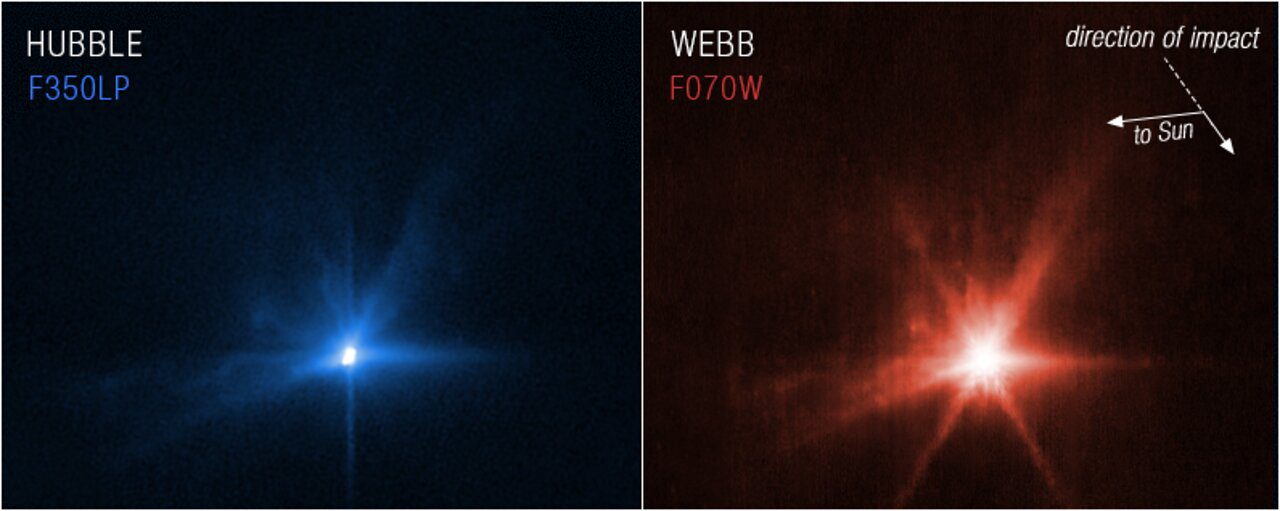The two titans of space observatories – Hubble and JWST – both captured the moment NASA’s DART mission intentionally slammed into an asteroid earlier this week. It’s the first time this pair of iconic telescopes have been used to simultaneously observe the same celestial target and their joint work is already helping to shed light on how this historic mission unfolded.
On Monday, the first-of-its-kind planetary defense mission saw an uncrewed spacecraft collide with asteroid moonlet Dimorphos, a small body just 160 meters (530 feet) in diameter, that orbits a larger, 780-meter (2,560-foot) asteroid called Didymos.
The aim was to see whether it could be possible to change the course of an asteroid if, hypothetically, it was heading towards Earth. In the words of NASA Administrator Bill Nelson, the mission was an “unprecedented success for planetary defense.”
The collision caused quite the bang. Brand new Hubble and JWST images show that the crash-landing resulted in a significant flash of flying debris, called ejecta, but the duo managed to capture slightly different aspects that will aid the scientific study of this event.

Full uncropped version of the image above. Image credit: NASA/ESA/CSA/STScI
Through the pair’s observations, astronomers hope to learn about the nature of the surface of Dimorphos, how much material was ejected by the collision, and how fast it was ejected. They are also looking to find out how the crash affected the asteroid: did the impact cause lots of big chunks to fly off or was it mostly fine dust?
JWST took one observation of the asteroid before the collision, then several more after the impact. Using its Near-Infrared Camera (NIRCam), the telescope captured plumes of material flinging away from the impact site in wisps of debris.
Over the next few months, JWST will use the NIRSpec, as well as the Mid-Infrared Instrument (MIRI), to gain insight into the asteroid’s chemical composition.
Elsewhere in the Solar System, Hubble was also busy working on Monday evening, capturing before and after shots of the impact. Its post-crash images showed material flying out of the impact site like rays stretching out from the body of the asteroid.
No one is quite sure why yet, but it appears some of the rays became slightly curved as they beamed out from the asteroid. Hubble’s observations also suggest that the brightness of Didymos increased by three times after impact.
Like JWST, Hubble will keep an eye on Dimorphos, observing it at least 10 more times over the next three weeks.
All of this is just the first chapter, however. In October 2024, ESA’s Hera mission is set to blast off and perform a detailed post-impact survey of Dimorphos to examine the aftermath of the first kinetic impact test of asteroid deflection. The mission will also be humankind’s first probe to rendezvous with a binary asteroid system.
Source Link: For First Time, Hubble And JWST Watched The Same Event: DART Slamming Into An Asteroid